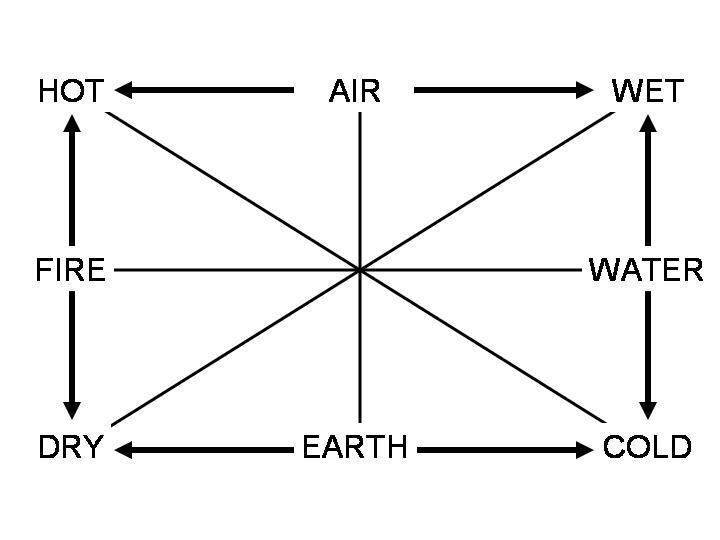| H | -- | ||||||||||||||||
| -- | -- | -- | C | N | O | -- | -- | ||||||||||
| -- | -- | -- | -- | P | S | Cl | -- | ||||||||||
| -- | -- | -- | Ti | -- | Cr | Mn | Fe | Co | Ni | Cu | Zn | -- | -- | As | -- | -- | -- |
| -- | -- | -- | -- | -- | Mo | -- | -- | -- | -- | Ag | -- | -- | Sn | Sb | Te | -- | -- |
| -- | -- | -- | -- | -- | W | -- | -- | -- | Pt | Au | Hg | -- | Pb | Bi | -- | -- | -- |
| -- | -- | -- | -- | -- | U |
B.C.
The following modern "elements" were known to the ancients:GREEK THOUGHT
Empedocles (ca. 490-435 B.C.) introduced the concept of the Four Elements:
- Air
- Earth
- Fire
- Water
Empedocles was tending toward the concept of an element as we define and element, Democritus towards the concept of an atom as we understand it, but there was apparently no thought of combining the ideas as we do when we speak of the atom of an element.
PLATO (427-347 B.C.) and ARISTOTLE (384-322 B.C.) abandoned the effort to account for physical phenomena by physical forces exclusively. Consequently, the great influence they had upon later thought was detrimental rather than stimulating to scientific advance. Discarding the atomic conception, they held that matter is continuous and infinitely divisible. The Four Elements are properties or qualities rather than substances that compose all matter. Particular examples of matter have intermediate degrees of these qualities, as indicated in the diagram below:

{Note the addition of the fifth element---"quintessence"---non-material, all pervading.} Another concept of this period was that metals consist of "sulphur" and "mercury;" this concept was extended somewhat by Chinese alchemists.
HINDU (INDIAN) THOUGHT
These Four Elements were also part of early Hindu thought, and were
- recognized by the senses.
- thought to consist of eternal, indestructible atoms which compose the natural tangible substances.